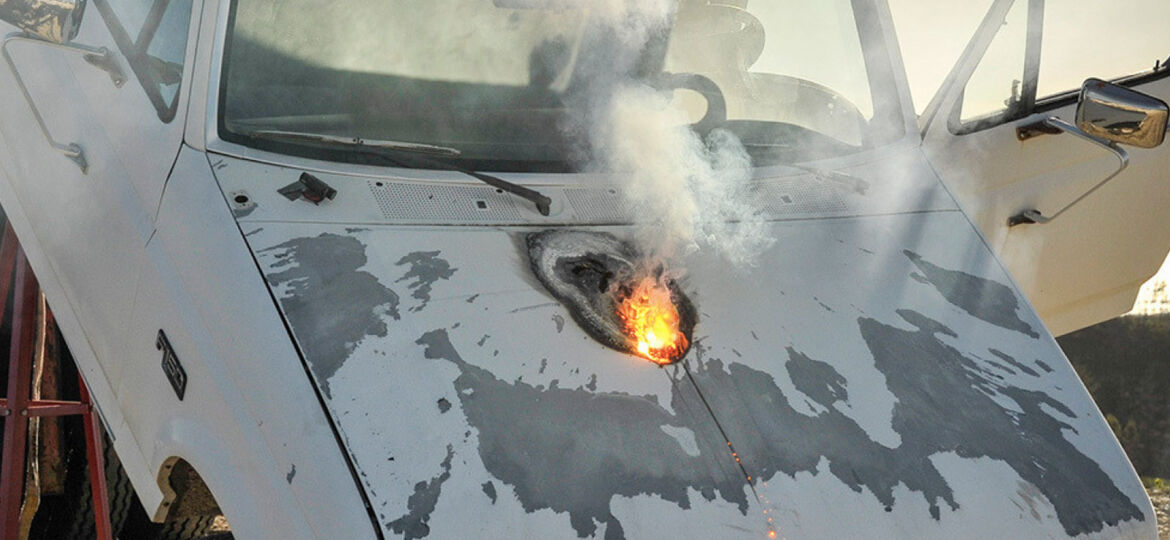
Directed energy weapons are coming of age
For years, the Pentagon has pursued the dream of directed energy weapons, laser weapons, that could defeat a foes arsenal of weapons – from small inflatable ribs and tanks to ICBM’s and hypersonic drones – for pennies when compared with the expensive multi million dollar, use once, kinetic weapons the department relies on today. And for years, the technology proved to be elusive.
But, according to a trio of Lockheed Martin executives who work on the development of the company’s laser arsenal, the time has finally come where those weapons are capable of being fielded.
“The technologies now exist,” said Paul Shattuck, company director for Directed Energy Systems.
“They can be packaged into a size, weight, power and thermal which can be fit onto relevant tactical platforms, whether it’s a ship, whether it’s a ground vehicle or whether it’s an airborne platform. So everything exists today,” he said, “it’s just a question of the desire and when is that going to occur.”
Daniel Miller, Senior Fellow for Air Vehicle Science and Systems with Lockheed’s Skunk Works division added, “the question is moving from, ‘Do we have the devices?’ to ‘How quickly can we integrate them on the platform?’ and the question has changed dramatically on the last decade.”
In essence, it’s no longer a technological problem to make laser weapons work. It’s one of integration at the service level.
Demonstration of the LAWS system installed on the USS Ponce in 2014
Asked flatly if the services came to them tomorrow and asked for a laser weapon in the 30 KW range to be delivered, the two men, along with Robert Afzal, a senior fellow with Laser and Sensor Systems, agreed they could produce a viable weapon for fielding.
That doesn’t mean that giant city-melting lasers are on their way. Right now, the weapons are limited to the 15-30 KW scale – going much further requires figuring out how to deal with atmospheric interference, an issue which becomes more complicated with weapons mounted on airborne systems such as drones.
But a 30 KW weapon can still bore a hole through a two inch piece of steel in seconds, said Shattuck, which is enough to disable an incoming rocket or, as you can see from the image above, melt the engine of a pickup truck. For the Pentagon, that is particularly key, as it has openly talked about the costs associated with using kinetic weapons to attack small trucks operated by the Islamic State group, commonly known as ISIS or ISIL.
The company has already proven the capabilities of a 30KW weapon with its Athena demonstrator, which last year conducted a series of tests on small unmanned systems from over a mile away. The weapon was able to identify and disable those systems with great accuracy, down to taking out just a leg of a system or blinding its camera.
A number of advancements in recent years have allowed the company to move forward with laser technology, but the biggest one is the movement in fiber-laser technology, which is largely driven from developments in the commercial sector.
The men described the technology as similar to a rack of servers. Once you figure out how to connect them all, you can add more power by adding another server. The same is true for the laser weapons – you add more power slots into the rack and increase its power.
So while the 30 KW weapons may be the ones that are deliverable now, scaling up is more a question of figuring out details than developing a wholesale new technology.
Lockheed is on track to deliver a 60 KW laser for the Army by the end of this year, known as the RELY program, said Afzal, saying “we’re underway. So we’re building hardware right now and we’re beginning the integration.”
Meanwhile, two years after the US Navy first fitted a Laser Weapons System (LAWS) onto the USS Ponce General Atomics has responded to a solicitation from the Office of Naval Research (ONR) to put a 150 KW laser weapon on a DDG-51 class destroyer to counter unmanned aircraft and small boats which will be demonstrated in 2018 on the USS Paul Foster, a decommissioned Spruance-class destroyer that now serves as the US Navy’s ship-defense test vessel at Port Hueneme in California.
















